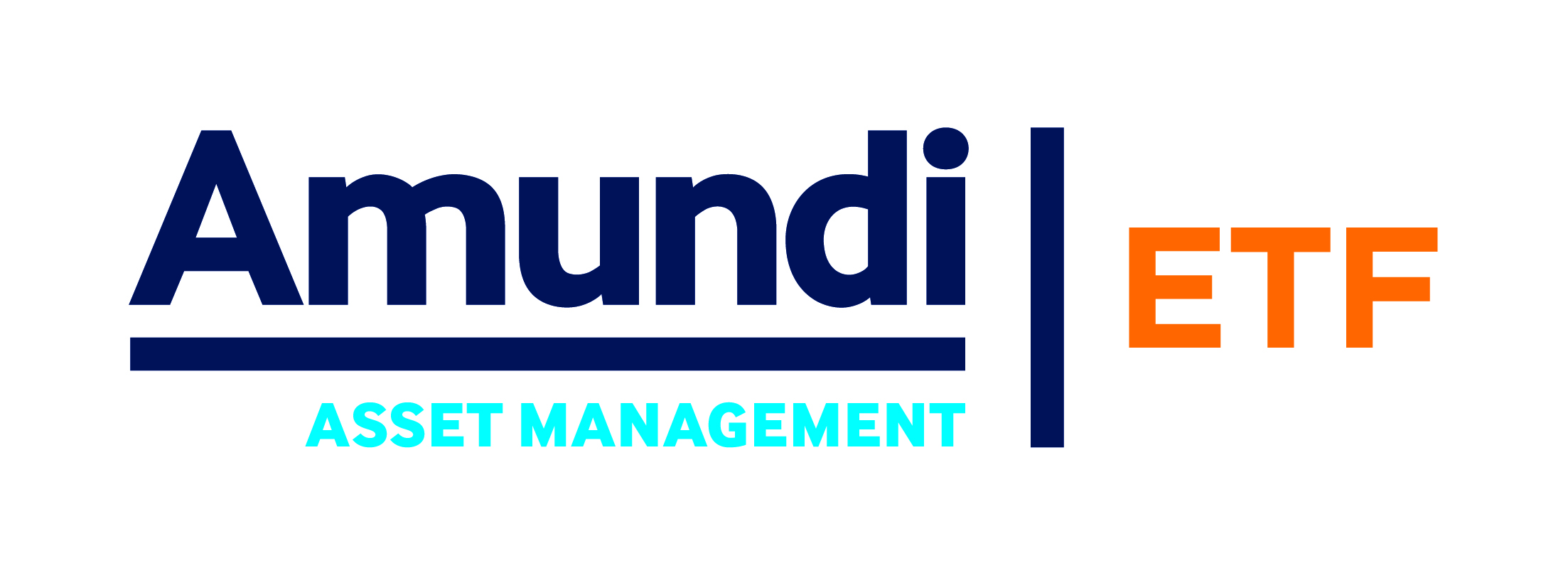Since 2006, EDHEC-Risk Institute has annually surveyed European professional investors about their views and uses of ETFs, and more recently about their use of smart beta and factor investing strategies, as part of the Amundi research chair at EDHEC-Risk Institute on ETF, Indexing and Smart Beta Investment Strategies.
This thirteenth edition of the survey made a focus on ESG investing, both in the context of ETFs, and smart beta and factor investing strategies, and highlighted a growing interest in the integration of an ESG component into investment.
The high level of interest among respondents in ESG was remarkable. It was not mandatory to answer ESG questions and yet at least 95% of respondents did so. Here we provide a summary of the survey results related to ESG topic.
The EDHEC European ETF, Smart Beta and Factor Investing Survey 2020 took the form of an online questionnaire addressed to European professionals in the asset management industry. It targeted institutional investors, as well as asset management firms and private wealth managers.
Our 191 respondents were high-ranking professionals within their organisations (49% belong to executive management and 29% are portfolio managers), with large assets under management (AUM) (35% of respondents represent firms with AUM exceeding €10bn). Respondents were distributed across different European countries, with 15% from the United Kingdom, 65% from other European Union member states, 16% from Switzerland and 4% from other countries outside the European Union.
How investors view ESG
Throughout the survey, investors were asked about their positions with regards to ESG criteria. First, they were asked about the reasons they find it important to incorporate ESG into investment decisions. It appears that the two main reasons for respondents to incorporate ESG is to allow for a positive impact on society (65%) and to reduce long-term risk (58%) (see Table 1).
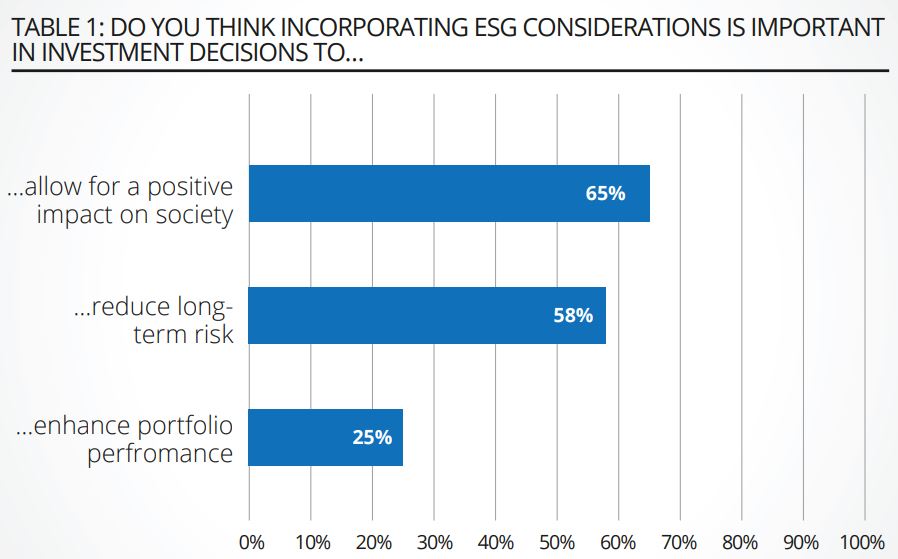
Interestingly, Table 1 shows that only a quarter of them (25%) think that incorporating ESG will serve to enhance portfolio performance. However, when respondents were asked if they were willing to accept a lower performance in exchange for a better ESG score, 63% of them answered they were not. It will therefore be important to find the right balance between the ESG score and the portfolio performance.
The majority of respondents (57%) identify the E (environmental) as the most important dimension of ESG. The G (governance) comes second (36%) and the S (social) ranks last with only 7% of respondents considering it to be the most important dimension of ESG (see Table 2). This ranking is not surprising considering the current strong concerns about climate change.
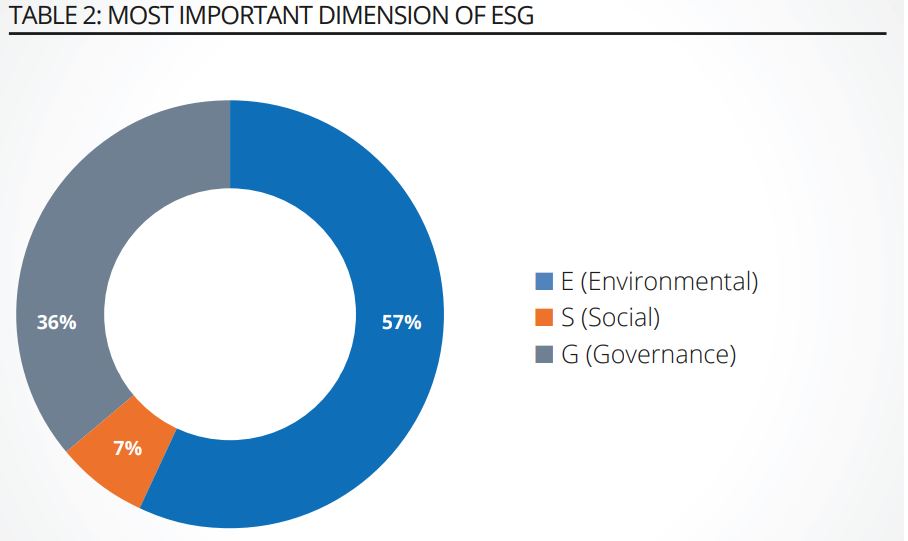
Respondents were asked in the survey to indicate their preferred approach to ESG. From Table 3, it appears that the best-in-class (i.e. positive screening) approach comes far ahead of the other two, with 45% of respondents preferring it, compared with 30% for the thematic approach and 25% for the negative screening approach.

How investors incorporate ESG in ETFs and how this use will develop in the future
Over the years, our surveys have shown a wide adoption of ETFs to invest in the main asset classes, with 92% of respondents using ETFs to invest in equities in 2020, and 97% being satisfied with them, high levels that have been observed for a decade.
For other asset classes, such as ESG and smart beta and factor investing, the use of ETFs has developed more recently. It is interesting to compare the respective evolution of these two asset classes within ETF investment over the years.
In 2011, only 17% of respondents were investing in ESG, compared to about one in two respondents (49%) in 2020, of whom 55% have used ETFs to invest in ESG in 2020, whereas the figures were only 22% in 2011 and 33% in 2019 (see Table 4). Aggregating these results, we see that more than a quarter (27%) of ETF users were using ETFs based on ESG in 2020, compared to only 4% in 2011.

The significant development in the use of ETFs to invest in ESG was observed not only in the rate of usage, but also in the intensity of usage, as ETFs accounted for 39% of total investment in ESG in 2020, compared with 13% in 2011. In addition, 87% of respondents using ETFs to invest in ESG are currently satisfied with them.
Respondents were also asked how they intend to use ETFs for incorporating ESG into their portfolio. Table 5 shows that the answers are fairly well distributed between the three propositions, even if “replacing standard ETF exposures by ESG exposures” comes first with 41% of respondents mentioning it. The two other propositions “introducing ESG in equity or fixed-income ETFs” and “using ETFs within a specific ESG portfolio” are not far behind with 37% and 36% of respondents, respectively, considering doing that (see Table 5).
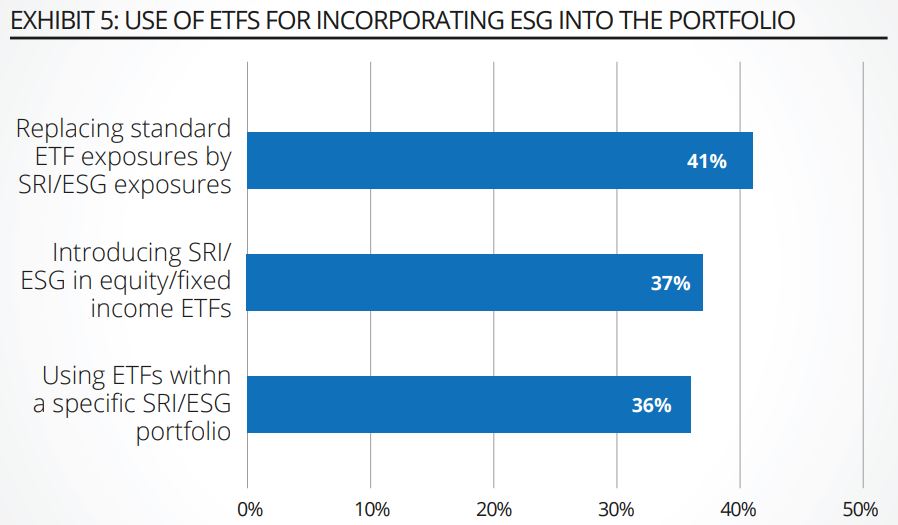
Smart beta and factor investing ETFs
Some 65% of respondents were using ETFs to invest in smart beta and factor investing in 2020, versus 66% in 2019, a proportion which has remained fairly stable since 2015, with a slight downward trend.
Proponents of smart beta have a lot to answer for
If we look at the proportion of respondents investing in this asset class, we also see a decline: 47% in 2020, compared to 55% in 2019 (see Table 6).
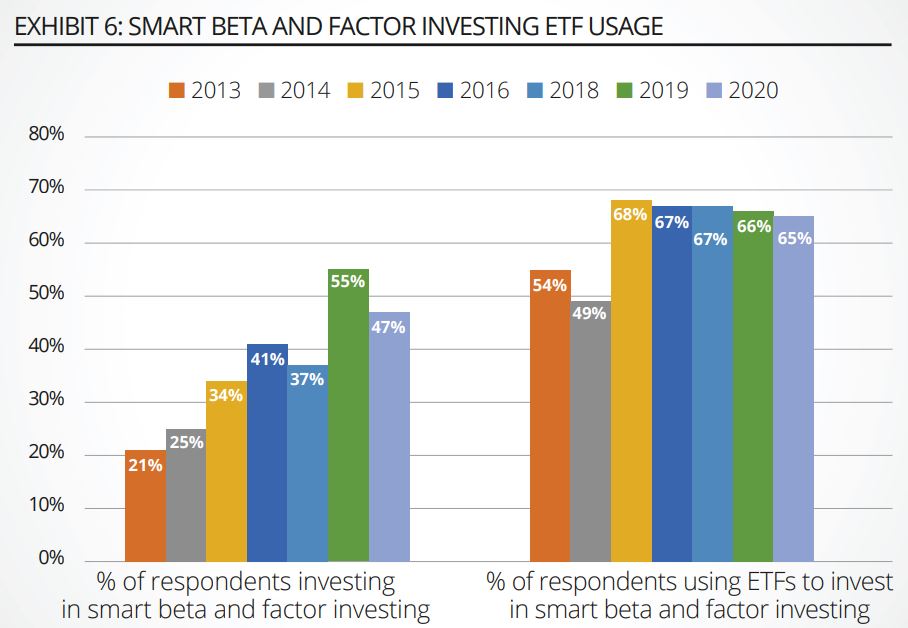
However, ETFs remain an appealing instrument for this asset class, as 47% of investment in smart beta and factor investing was made through ETFs in 2020, versus 38% in 2019, and 77% of respondents were satisfied with them.
Future development of ETFs
In 2020, 54% of investors plan to further increase their use of ETFs in the future, despite the already high maturity of this market and high adoption rates. The top concern for 43% of respondents is currently the further development of ESG ETFs.
In second position, 31% of respondents called for more development of low-carbon ETFs. Additionally, for ETFs related to advanced forms of equity indices – namely those based on smart beta and multi-factor indices – 29% and 25% of respondents called for further developments in these two areas, respectively (see Table 7).

If we aggregate the responses concerning ESG and low-carbon ETFs, we see that 50% of respondents would like to see further developments in at least one of the two categories, compared with 38% in 2019.
In the same way, if we aggregate the responses concerning smart beta indices, single-factor indices and multi-factor indices, we see that 43% of respondents would like to see further developments in at least one category related to smart beta equity or factor indices, compared with 45% in 2019.
How investors integrate ESG within smart beta and factor investing strategies and what future developments are required?
Survey participants were also invited to give their opinion on smart beta and factor investing strategies beyond their use through ETFs. The main motivation behind the adoption of smart beta and factor investing strategies is to improve performance. Managing risk is also considered an important criterion. 38% of participants currently invest in smart beta and factor investing strategies; 24% do not but are considering adopting such strategies in the future.
However, despite a high rate of adoption, these investments typically make up only a small fraction of portfolio holdings among those respondents who have made investments in these strategies. More than two-thirds of respondents (70%) invest less than 20% of their total investments in smart beta and factor investing strategies, and only 13% of respondents invest more than 40%. However, 48% of respondents are planning an increase of more than 10% in terms of assets in their use of smart beta and factor investing products in the near future, while only 7% indicate a planned decrease.
Respondents were asked about the approach they consider to be the best in reducing a portfolio’s carbon footprint within smart beta and factor investing strategies. 45% of them consider the best approach is positive screening. Portfolio optimisation comes in second position (32% of respondents).
Lastly, only 23% of respondents consider negative screening as the best approach (see Table 8). In addition, about two-thirds of respondents (65%) consider that sector or neutrality constraints are appropriate when using an ESG filter.
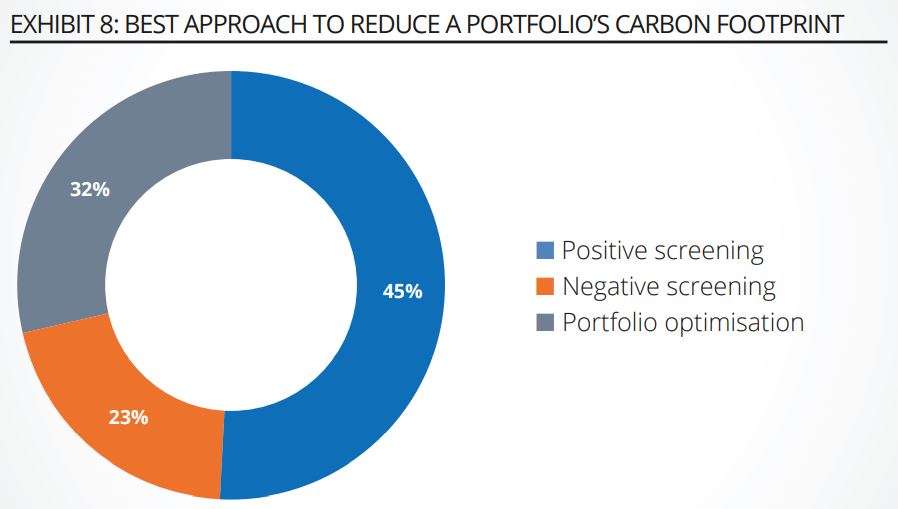
Future development of smart beta and factor investing strategies
ESG, fixed income and alternative asset classes are the main expectations for future development of smart beta and factor investing products. Respondents would also like more customised smart beta and factor investing solutions to be developed (see Table 9).
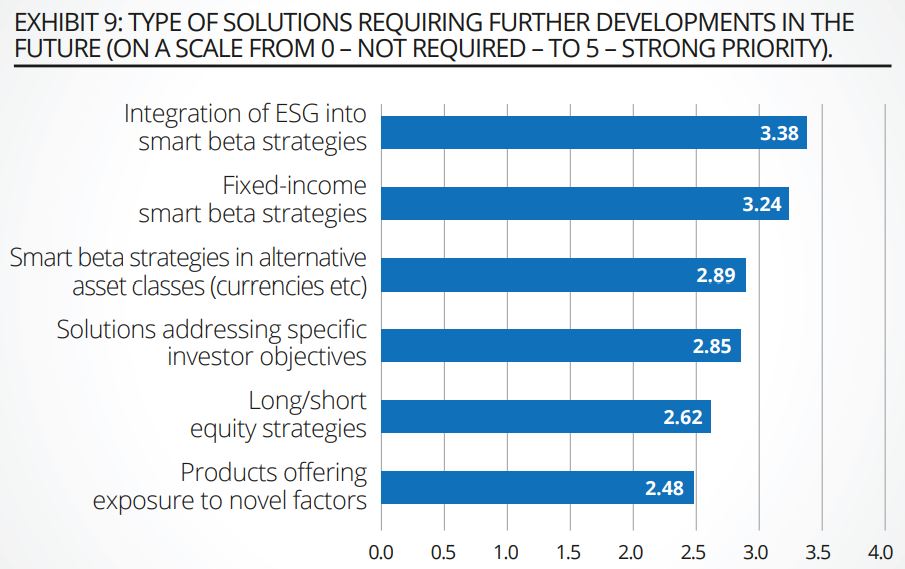
Smart beta researchers and product providers doubtless must work to integrate ESG concerns into their solutions for smart beta and factor investing strategies to better meet investment demands.
Véronique Le Sourd is a senior research engineer at EDHEC-Risk Institute
This article first appeared in the Q4 2020 edition of Beyond Beta, the world’s only smart beta publication. To receive a full copy,click here.

